Proteases
Proteases is a general term for a class of enzymes that hydrolyze protein peptide chains. According to the way they degrade polypeptides, they are divided into two categories: endopeptidases and telopeptidases. The former can cut the large molecular weight polypeptide chain from the middle to form prions and peptones with smaller molecular weights; the latter can be divided into carboxypeptidase and aminopeptidase, which respectively remove the peptide from the free carboxyl terminus or free amino terminus of the polypeptide one by one. Chain hydrolysis produces amino acids.
A general term for a class of enzymes that hydrolyze peptide bonds in proteins. According to the way they hydrolyze polypeptides, they can be divided into endopeptidases and exopeptidases. Endopeptidase cleaves the interior of the protein molecule to form smaller molecular weight peptones and peptones. Exopeptidase hydrolyzes peptide bonds one by one from the end of the free amino group or carboxyl group of protein molecules, and frees amino acids, the former is aminopeptidase and the latter is carboxypeptidase. Proteases can be classified into serine proteases, sulfhydryl proteases, metalloproteases and aspartic proteases according to their active centers and optimum pH. According to the optimum pH value of its reaction, it is divided into acidic protease, neutral protease and alkaline protease. The proteases used in industrial production are mainly endopeptidases.
Proteases are widely found in animal offal, plant stems and leaves, fruits and microorganisms. Microbial proteases are mainly produced by molds and bacteria, followed by yeast and actinomycetes.
Enzymes that catalyze the hydrolysis of proteins. There are many kinds, the important ones are pepsin, trypsin, cathepsin, papain and subtilisin. Proteases have strict selectivity for the reaction substrates they act on. A protease can only act on certain peptide bonds in protein molecules, such as the peptide bonds formed by the hydrolysis of basic amino acids catalyzed by trypsin. Proteases are widely distributed, mainly in the digestive tract of humans and animals, and are abundant in plants and microorganisms. Due to limited animal and plant resources, the industrial production of protease preparations is mainly prepared by fermentation of microorganisms such as Bacillus subtilis and Aspergillus terrestris.
Targets for Proteases
- Caspase(114)
- Aminopeptidase(24)
- ACE(74)
- Calpains(20)
- Carboxypeptidase(10)
- Cathepsin(81)
- DPP-4(31)
- Elastase(26)
- Gamma Secretase(67)
- HCV Protease(59)
- HSP(113)
- HIV Integrase(37)
- HIV Protease(47)
- MMP(228)
- NS3/4a protease(8)
- Serine Protease(18)
- Thrombin(58)
- Urokinase(4)
- Cysteine Protease(0)
- Other Proteases(18)
- Tyrosinases(47)
- 15-PGDH(1)
- Acetyl-CoA Carboxylase(13)
- Acyltransferase(59)
- Aldehyde Dehydrogenase (ALDH)(28)
- Aminoacyl-tRNA Synthetase(9)
- ATGL(1)
- Dipeptidyl Peptidase(56)
- Drug Metabolite(457)
- E1/E2/E3 Enzyme(90)
- Endogenous Metabolite(1636)
- FABP(30)
- Farnesyl Transferase(23)
- Glutaminase(14)
- Glutathione Peroxidase(14)
- Isocitrate Dehydrogenase (IDH)(28)
- Lactate Dehydrogenase(17)
- Lipoxygenase(234)
- Mitochondrial Metabolism(207)
- NEDD8-activating Enzyme(7)
- Neprilysin(12)
- PAI-1(13)
- Ser/Thr Protease(41)
- Tryptophan Hydroxylase(13)
- Xanthine Oxidase(18)
- MALT1(10)
- PCSK9(1)
Products for Proteases
- Cat.No. Nom du produit Informations
-
GC30649
(S)-3,4-Dihydroxybutyric acid
L'acide (S)-3,4-dihydroxybutyrique est un métabolite urinaire humain normal qui est excrété en concentration accrue chez les patients présentant un déficit en succinique semialdéhyde déshydrogénase (SSADH).
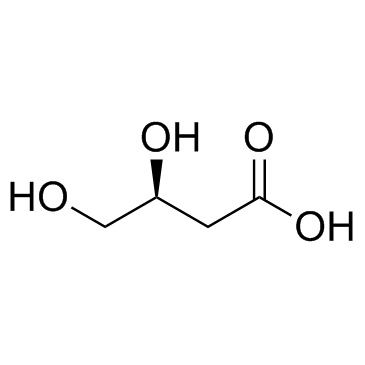
-
GC64473
(S)-3,4-Dihydroxybutyric acid lithium hydrate
L'acide (S)-3,4-dihydroxybutyrique (hydrate de lithium) est un métabolite urinaire humain normal qui est excrété en concentration accrue chez les patients présentant un déficit en semialdéhyde succinique déshydrogénase (SSADH).
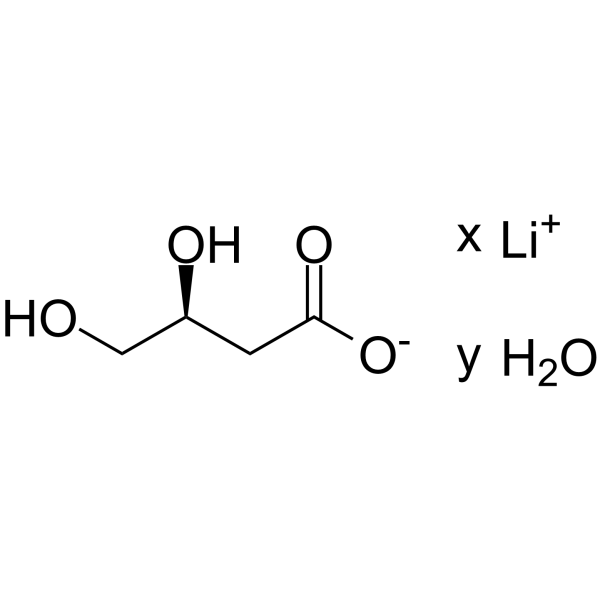
-
GC62749
(S)-3-Hydroxy-2-(Phosphonooxy)Propanoic Acid
L'acide (S)-3-hydroxy-2-(phosphonooxy)propanoÏque est un métabolite endogène.
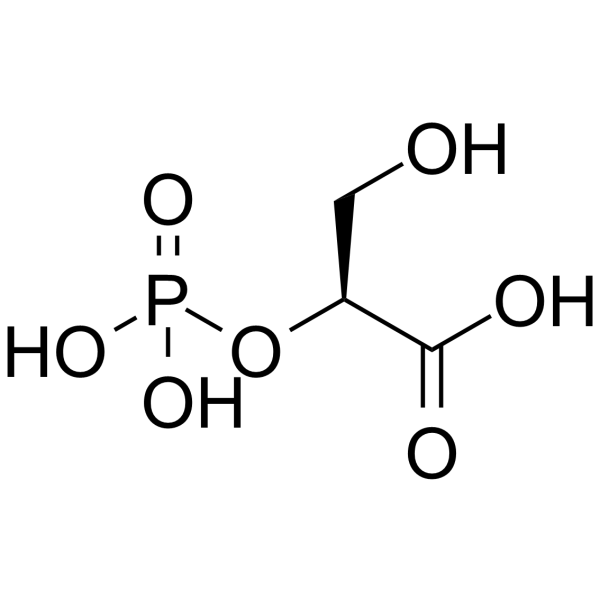
-
GC30304
(S)-3-Hydroxybutanoic acid ((S)-β-Hydroxybutanoic acid)
L'acide (S)-3-hydroxybutanoÏque ((S)-β-acide hydroxybutanoÏque) est un métabolite humain normal, qui a été trouvé élevé chez les patients gériatriques en rémission d'une dépression.

-
GC30623
(S)-3-Hydroxyisobutyric acid
L'acide (S)-3-hydroxyisobutyrique est un métabolite interorganique important, un intermédiaire dans les voies de la l-valine et de la thymine et un bon substrat gluconéogénique.
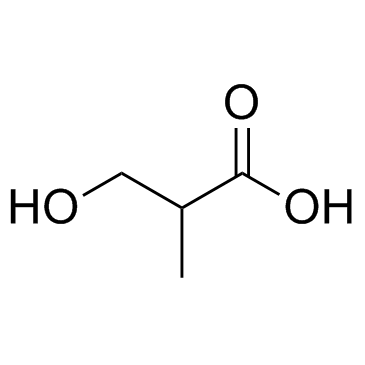
-
GC30148
(S)-b-aminoisobutyric acid
L'acide (S)-b-aminoisobutyrique est un acide aminé non protéique provenant du catabolisme de la thymine et de la valine.

-
GC32993
(S)-GNE-140
Le (S)-GNE-140 est l'énantiomère le moins actif du GNE-140 qui peut inhiber la lactate déshydrogénase A (LDHA).

-
GC62751
(S)-Higenamine hydrobromide
Le bromhydrate de (S)-higénamine ((S)-norcoclaurine), un énantiomère S de l'higénamine, est le composé d'entrée dans la biosynthèse des alcaloÏdes de la benzylisoquinoléine.
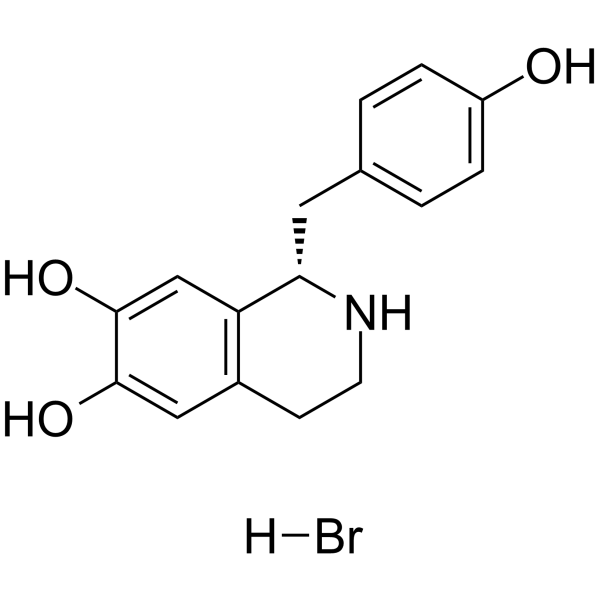
-
GC40145
(S)-Laudanosine
(S)-Laudanosine is the (S) enantiomer of laudanosine, a metabolite of the neuromuscular blocking agents atracurium and cisatracurium.

-
GC30735
(S)-Leucic acid
L'acide (S)-leucique est un métabolite d'acide aminé.
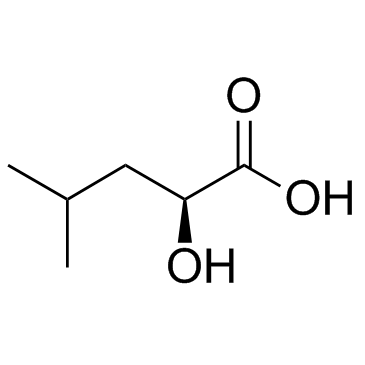
-
GC69914
(S)-Malic acid-d3
(S)-Malic acid-d3 est le déutérium de l'acide (S)-malique. L'acide (S)-malique ((S)-acide 2-hydroxysuccinique) est un acide dicarboxylique naturellement présent, source de goût sucré-acidulé dans les fruits et souvent utilisé comme additif alimentaire.
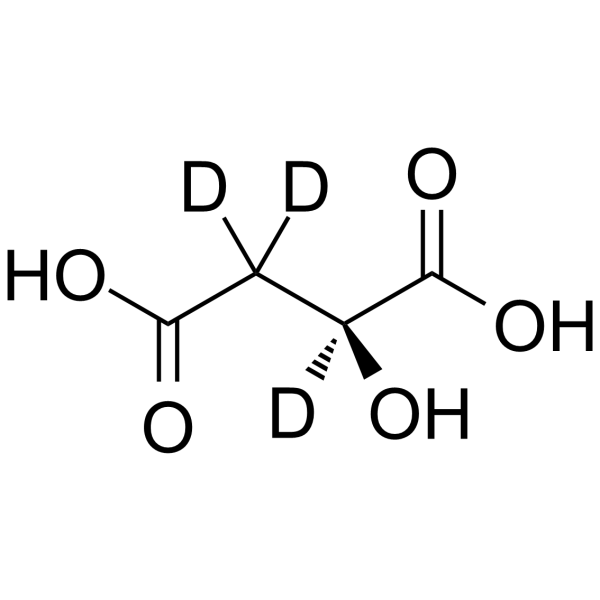
-
GC35003
(S)-Nornicotine
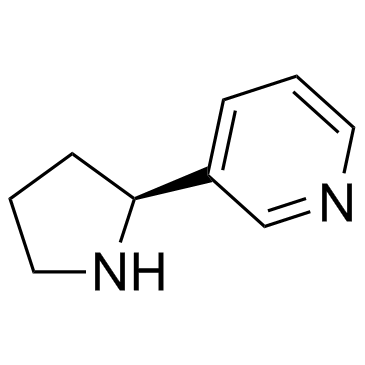
-
GC49179
(S)-O-Desmethyl Naproxen
A metabolite of (S)-naproxen

-
GC60419
(S)-O-Desmethyl Venlafaxine N-Oxide
(S)-O-Desmethyl Venlafaxine N-Oxide est un N-oxyde de (S)-O-Desmethyl Venlafaxine.
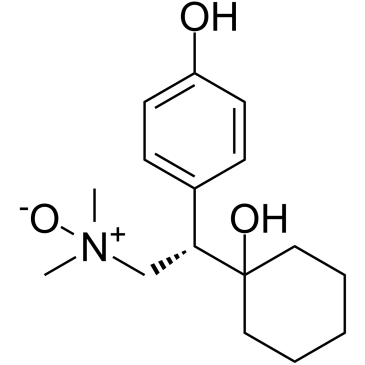
-
GC65883
(S,R)-WT IDH1 Inhibitor 2
(S,R)-WT IDH1 Inhibitor 2 (GSK321) est un puissant inhibiteur IDH1 mutant sélectif avec des valeurs IC50 de 2,9, 3,8, 4,6 et 46 nM pour R132G, R132C, R132H et WT IDH1, respectivement, et >100 fois sélectivité sur IDH2. (S,R)-WT IDH1 Inhibitor 2 induit une diminution du 2-HG intracellulaire, l'abrogation du bloc de différenciation myéloÏde et l'induction de la différenciation granulocytaire au niveau des blastes leucémiques et des cellules souches plus immatures. (S,R)-WT IDH1 Inhibitor 2 peut être utilisé pour la recherche sur la leucémie myéloÏde aiguë (LMA) et d'autres cancers.
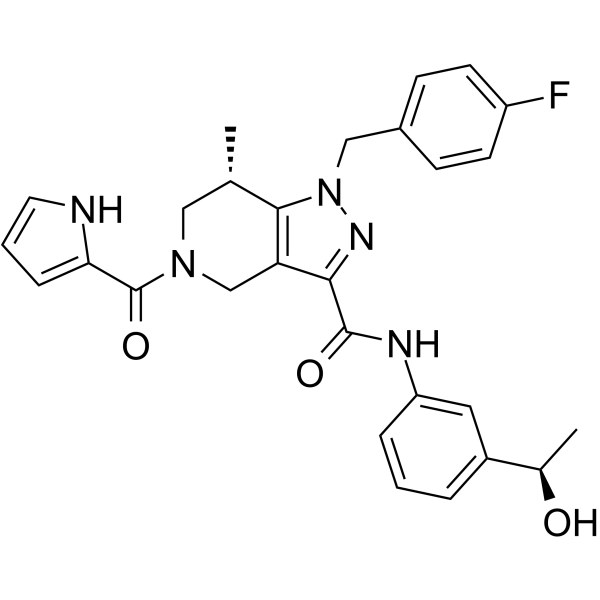
-
GC67682
(S,S)-GSK321
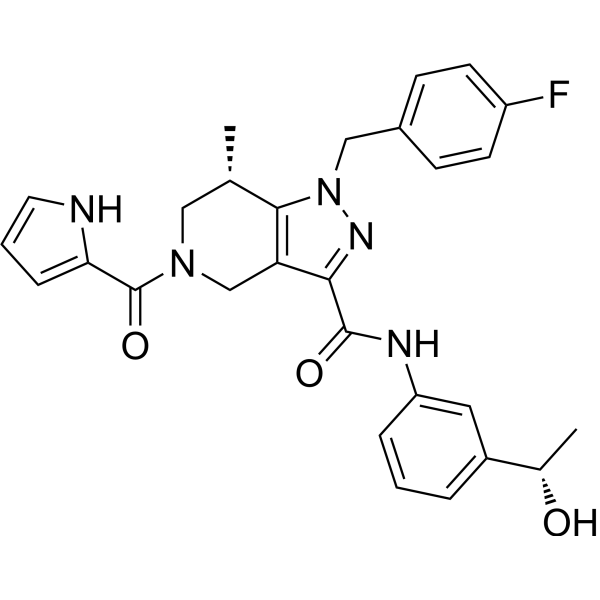
-
GC64535
(S,S)-TAPI-1
(S,S)-TAPI-1 est un isomère de TAPI-1.

-
GC60427
(Z)-10-Hydroxynortriptyline
La (Z)-10-hydroxynortriptyline est un métabolite de la nortriptyline.
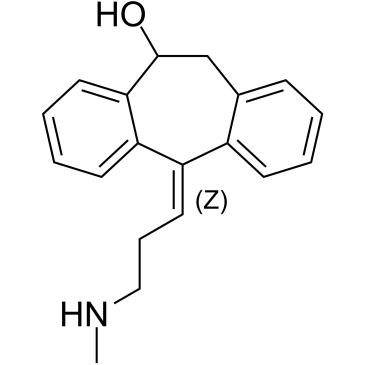
-
GC67761
(Z)-10-Hydroxynortriptyline-d3
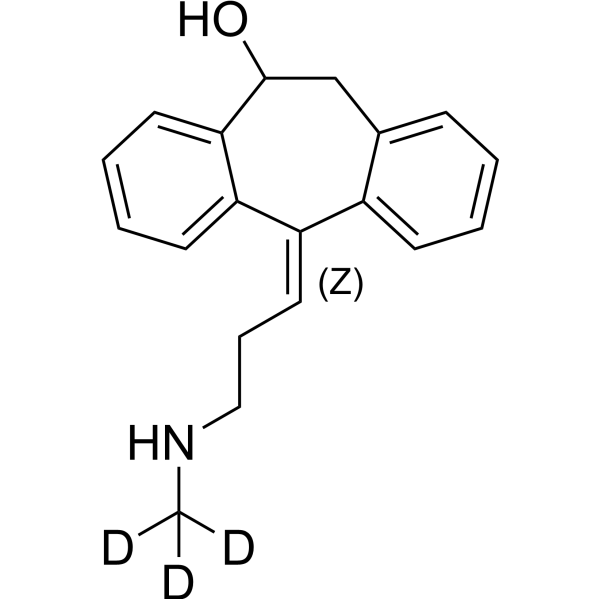
-
GC31253
(Z)-Hexadec-9-enoic acid
L'acide (Z)-hexadéc-9-énoÏque, une composition d'acide gras, est impliqué dans la prévention de la mort par troubles cérébrovasculaires chez les rats SHRSP.
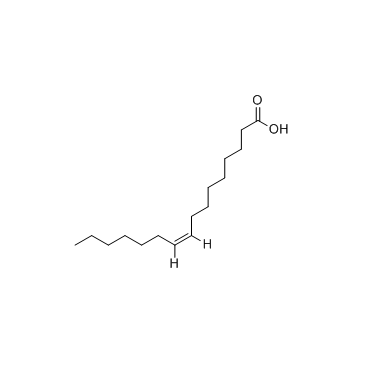
-
GC11847
(Z-Ala-Ala-Ala-Ala)2Rh110
fluorogenic elastase substrate
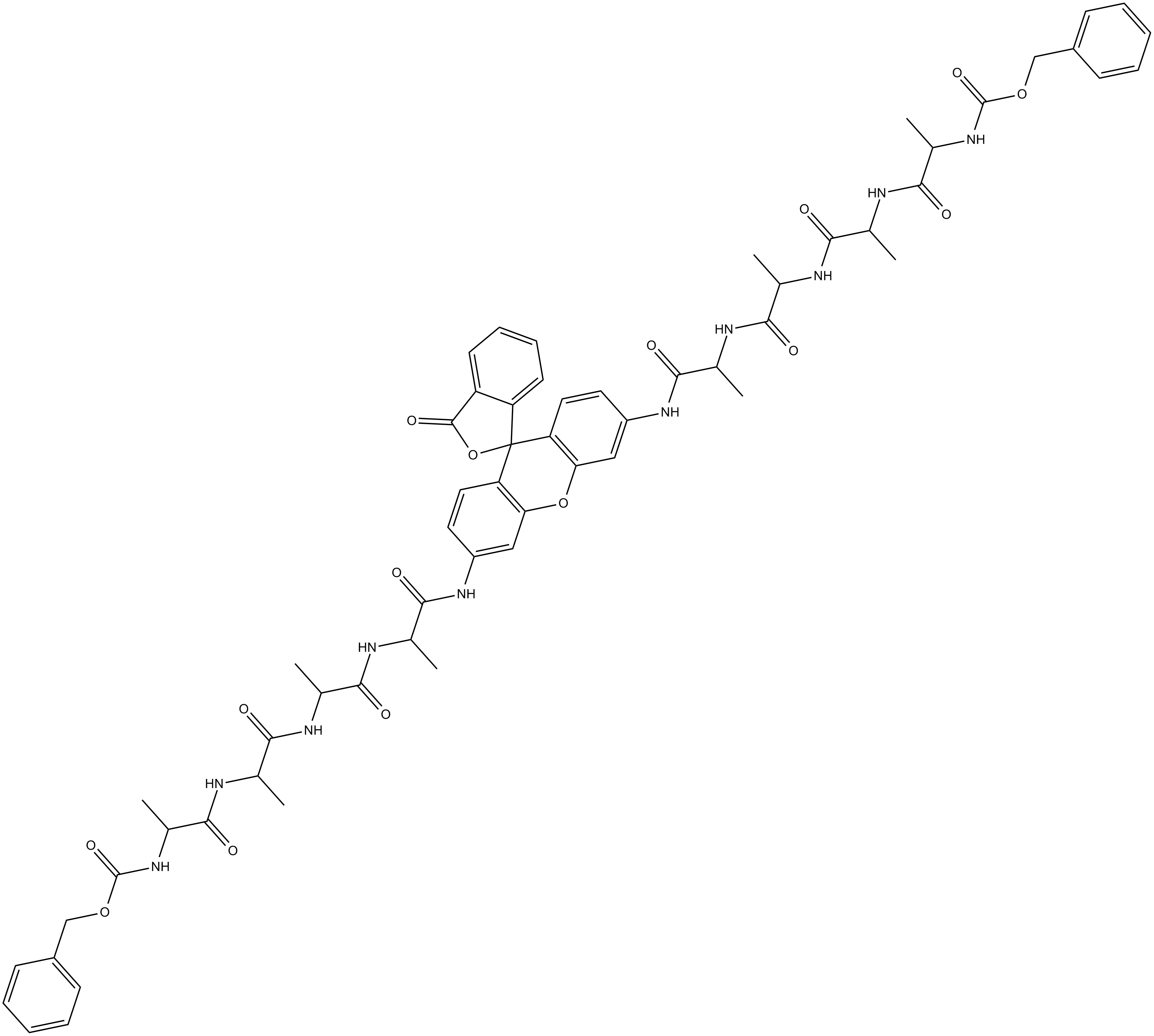
-
GC18596
(±)-2-propyl-4-Pentenoic Acid
L'acide (±)-2-propyl-4-penténoÏque (4-en-VPA) est un métabolite toxique majeur de l'acide valproÏque.

-
GC16375
(±)-Jasmonic Acid methyl ester
(±) - L'ester méthylique de l'acide jasmonique est un métabolite endogène.
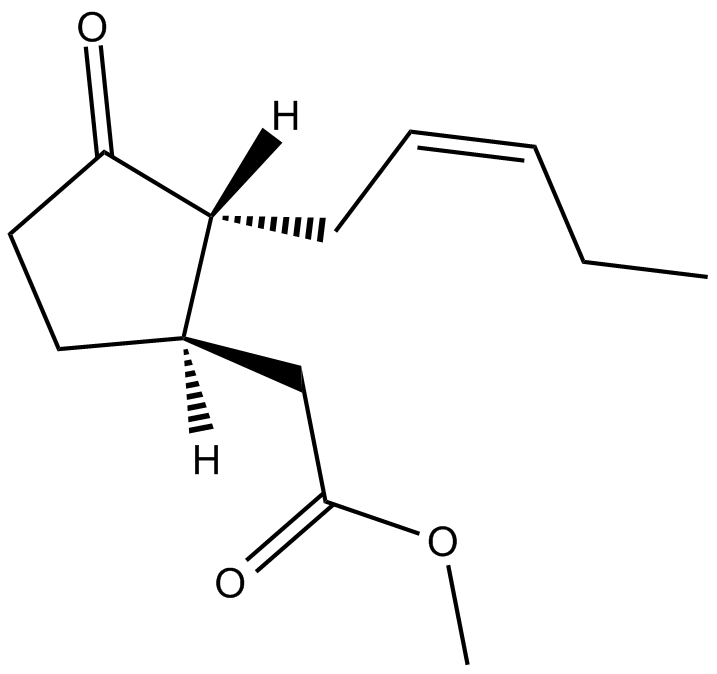
-
GC41995
1'-hydroxy Midazolam
Principal métabolite de l'anesthésique, le midazolam.

-
GC45978
1,10-Phenanthroline (hydrate)
Le monohydrate d'o-phénanthroline (1,10-phénanthroline), un chélateur de métaux, empêche l'induction d'aberrations chromosomiques dans les cellules traitées À la streptozotocine.

-
GC41765
1,2,3-Tri-13(Z)-Docosenoyl-rac-glycerol
Le 1,2,3-Tri-13(Z)-Docosenoyl-rac-glycérol est un triglycéride d'acide triérucique issu de l'huile de graines.

-
GC41767
1,2,3-Triarachidonoyl-rac-glycerol
Le 1,2,3-triarachidonoyl-rac-glycérol est un métabolite endogène.

-
GC41768
1,2,3-Tridecanoyl-rac-glycerol
Le 1,2,3-tridécanoyl-rac-glycérol (tridécanoate de glycéryle) est un précurseur de l'acide décanoÏque (DA) disponible par voie orale et peut être hydrolysé en DA.

-
GC41770
1,2,3-Trieicosapentaenoyl-rac-glycerol
1,2,3-Trieicosapentaenoyl-rac-glycerol (EPA-TG) is a glycerol ester of eicosapentaenoic acid, which is an ω-3 fatty acid.

-
GC45948
1,2,3-Trilinoelaidoyl-rac-glycerol
A triacylglycerol

-
GC46041
1,2,3-Trilinoleoyl-rac-glycerol
Le 1,2,3-trilinoléoyl-rac-glycérol est un métabolite endogène.

-
GC41774
1,2,3-Trimyristoyl-rac-glycerol
Le 1,2,3-trimyristoyl-rac-glycérol, un composant molluscicide actif de Myristica fragransHoutt, inhibe de manière significative les activités de l'acétylcholinestérase (AChE), de la phosphatase acide et alcaline (ACP/ALP) dans le tissu nerveux de Lymnaea acuminata.

-
GC41776
1,2,3-Trioleoyl-rac-glycerol
Le 1,2,3-trioléoyl-rac-glycérol est un triacylglycérol symétrique, réduit la régulation À la hausse de MMP-1, avec de fortes propriétés antioxydantes et anti-inflammatoires.

-
GC41778
1,2,3-Tripalmitoyl-rac-glycerol
Le 1,2,3-tripalmitoyl-rac-glycérol est un métabolite endogène.

-
GC39766
1,2-Cyclohexanedione
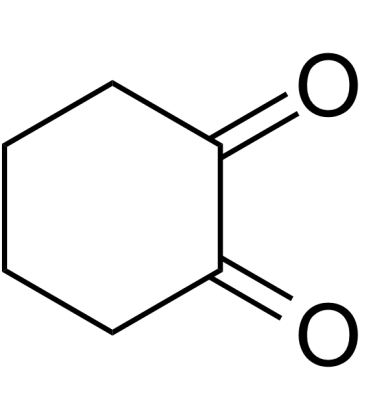
-
GC41804
1,2-Dimyristoyl-sn-glycero-3-PE
Le 1,2-dimyristoyl-sn-glycéro-3-PE est un métabolite endogène.

-
GC41822
1,2-Dipalmitoyl-sn-glycero-3-PE
Le 1,2-dipalmitoyl-sn-glycéro-3-PE est un métabolite endogène.

-
GC41825
1,2-Dipalmitoyl-sn-glycero-3-phosphate (sodium salt)
Le 1,2-dipalmitoyl-sn-glycéro-3-phosphate (sel de sodium) (composé 3-F7) est un acide phosphatidique et un métabolite endogène humain[1]In Vitro : les acides phosphatidiques sont des lipides biologiquement actifs qui peuvent stimuler une large gamme des réponses dans de nombreux types de cellules différents, telles que l'agrégation plaquettaire, la contraction des muscles lisses, les effets vasoactifs in vivo, la chimiotaxie, l'expression de molécules d'adhésion, l'augmentation de la perméabilité des jonctions serrées des cellules endothéliales, l'induction de fibres de stress, la modulation de la contractilité cardiaque et bien d'autres .

-
GC13877
1,2-Dipalmitoyl-sn-glycerol
Le 1,2-dipalmitoyl-sn-glycérol est un métabolite endogène.
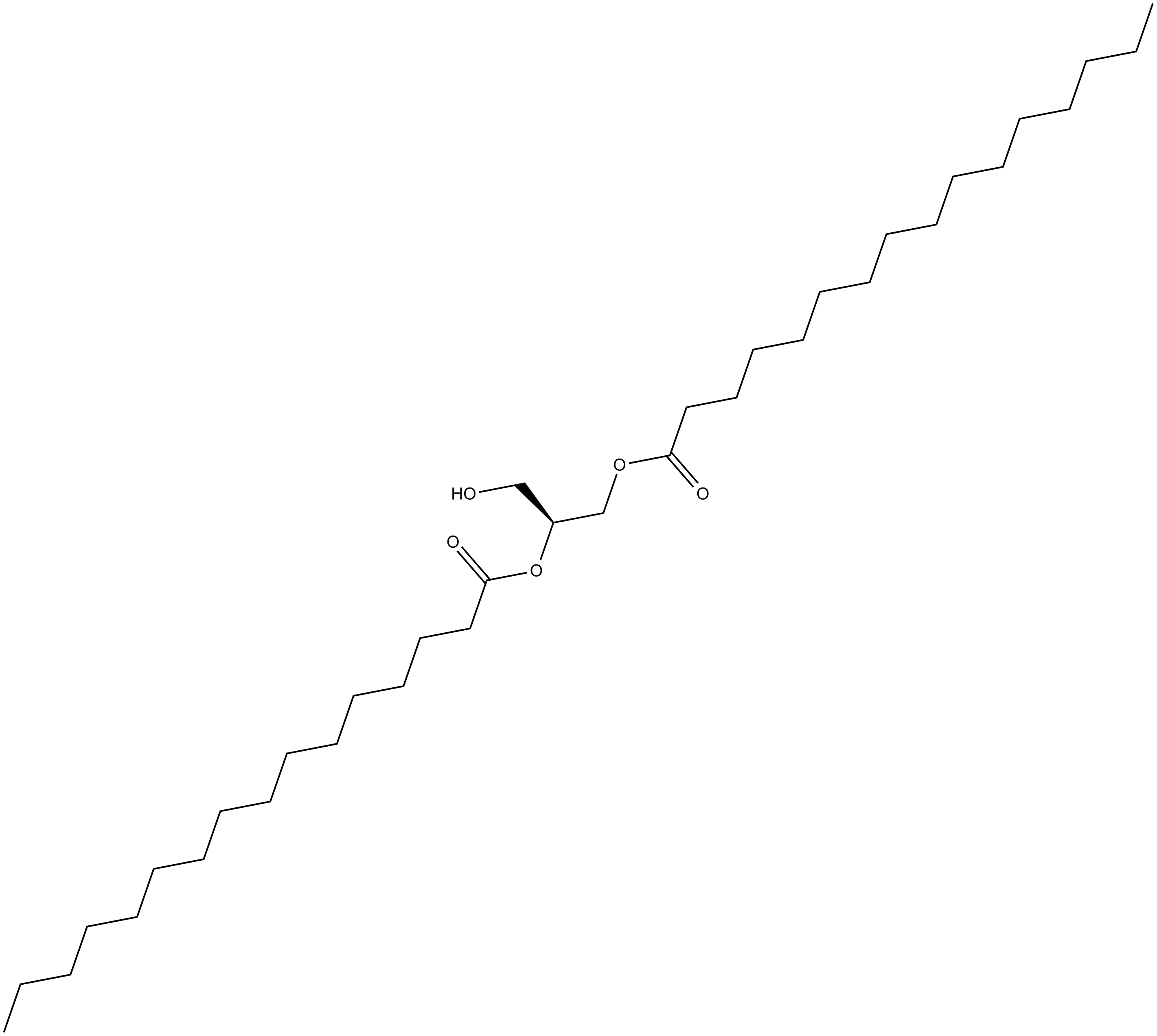
-
GC33621
1,2-Dipalmitoyl-sn-glycerol 3-phosphate
Le 1,2-dipalmitoyl-sn-glycérol 3-phosphate (composé 3-F7) est un acide phosphatidique et un métabolite endogène humain .

-
GC33789
1,2-Distearoyl-sn-glycero-3-phosphorylethanolamine (1,2-DSPE)
La 1,2-distéaroyl-sn-glycéro-3-phosphoryléthanolamine (1,2-DSPE) (DSPE) est un lipide phosphoéthanolamine (PE) qui peut être utilisé dans la synthèse de liposomes.
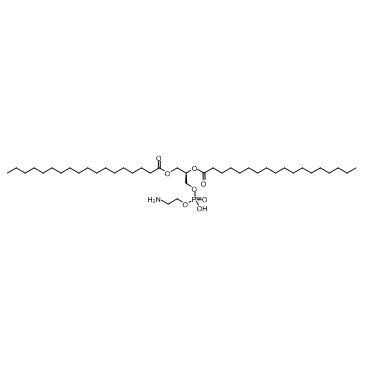
-
GC41837
1,3,7-Trimethyluric Acid
L'acide 1,3,7-triméthylurique est le métabolite de la caféine. Le rapport métabolique de l'acide 1,3,7-triméthylurique À la caféine peut être évalué en tant que biomarqueur pour décrire la variabilité de l'activité du CYP3A dans une cohorte.

-
GC46387
1,3,7-Trimethyluric Acid-d9
An internal standard for the quantification of 1,3,7-trimethyluric acid

-
GC62352
1,3-Butanediol
1,3-Butanediol, un dimère d'éthanol fournissant une source de calories pour l'alimentation humaine.
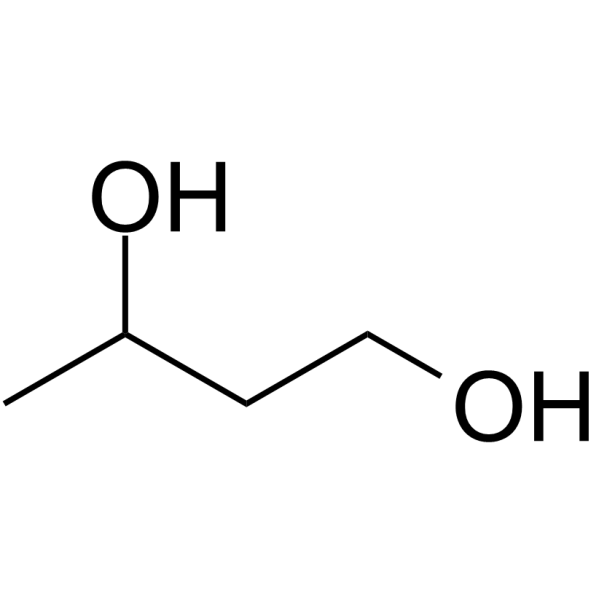
-
GC30742
1,3-Diaminopropane
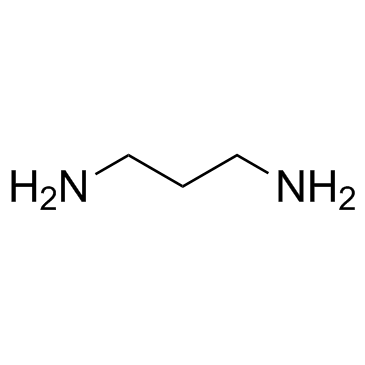
-
GC60433
1,3-Dimethyluracil
Le 1,3-diméthyluracile est une pyrimidone dérivée d'un uracile.
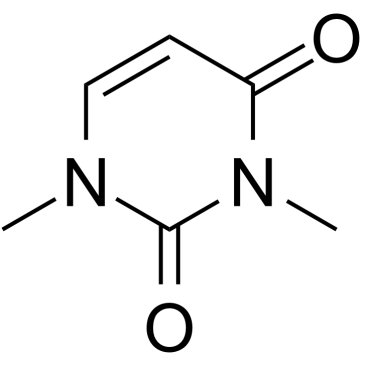
-
GC30749
1,3-Dimethyluric acid
L'acide 1,3-diméthylurique est un produit du métabolisme de la théophylline chez l'homme.
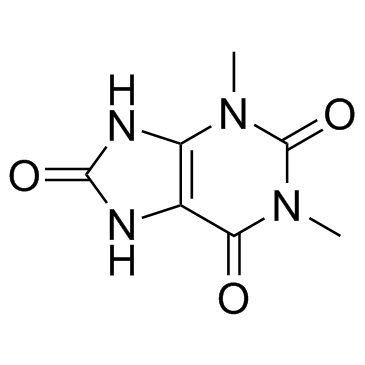
-
GC60011
1,3-Dithiane
Le 1,3-Dithiane est un équivalent anion formaldéhyde protégé qui pourrait servir de synthon marqué utile.
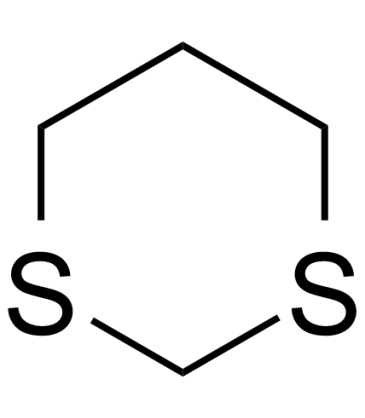
-
GC19528
1,4-Benzoquinone
A toxic metabolite of benzene

-
GC62755
1,4-D-Gulonolactone
La 1,4-D-Gulonolactone est un métabolite endogène.

-
GC35039
1,4-Diaminobutane dihydrochloride
Le dichlorhydrate de 1,4-diaminobutane (putrescine) est un métabolite endogène, agit comme un indicateur du stress induit par la pollution chez les végétaux supérieurs : orge et colza stressés au Cr(III) ou au Cr(VI).
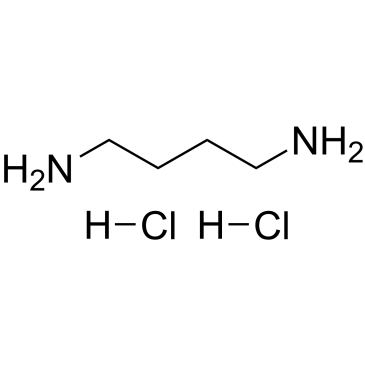
-
GC68486
1,4-Diaminobutane-d8 dihydrochloride
1,4-Diaminobutane-d8 (dihydrochloride) est le déutérium substitué de 1,4-Diaminobutane dihydrochloride. Le dihydrochlorure de 1,4-diaminobutane (putrescine) est un métabolite endogène qui peut servir d'indicateur de la pollution causée par le stress au Cr (III) ou Cr (VI) chez les plantes supérieures telles que l'orge et la colza.
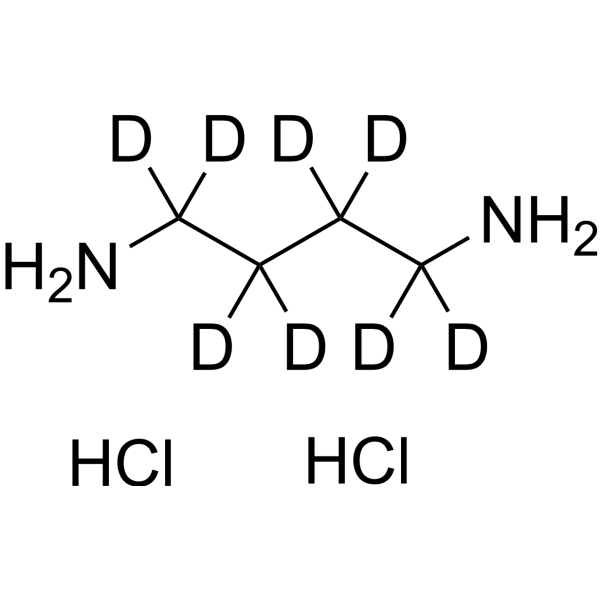
-
GC60435
1,4-Dimethoxybenzene
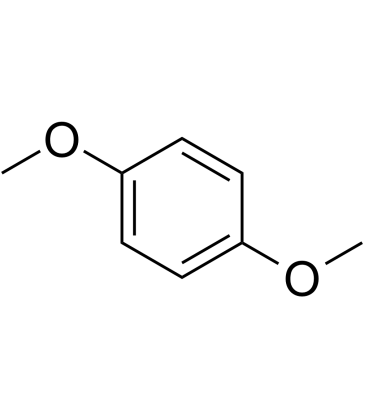
-
GC38242
1,4-Dioxane-2,5-diol
Le 1,4-dioxane-2,5-diol est un métabolite endogène.
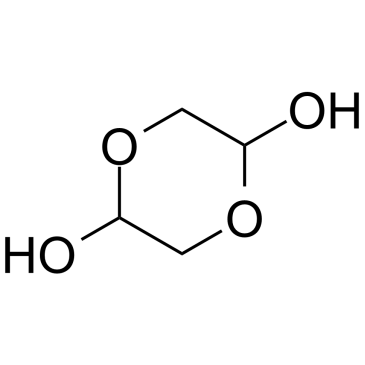
-
GC33801
1,5-Anhydrosorbitol
Le 1,5-anhydrosorbitol est un marqueur À court terme du contrÔle glycémique.
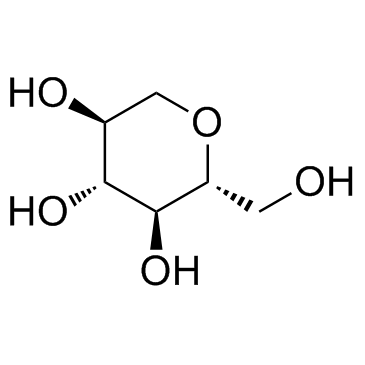
-
GC19717
1,6-anhydroglucose
Le 1,6-anhydroglucose (1,6-anhydro-β-D-glucopyranose) est un anhydrosucre produit par pyrolyse des glucanes et largement répandu dans la nature.
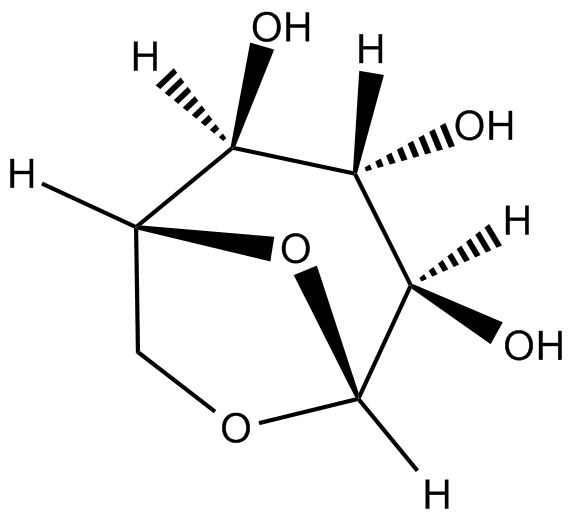
-
GC49294
1-(4-Chlorobenzhydryl)piperazine
An inactive metabolite of meclizine and chlorcyclizine

-
GC38270
1-Aminocyclopropane-1-carboxylic acid
L'acide 1-aminocyclopropane-1-carboxylique est un métabolite endogène.
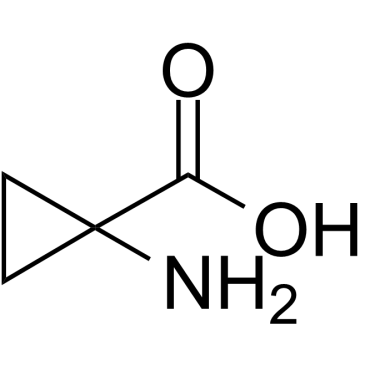
-
GC64404
1-Aminopropan-2-ol
Le 1-aminopropan-2-ol est un métabolisme microbien du métabolisme des aminoalcools via le propionaldéhyde et l'acétaldéhyde chez une espèce de Pseudomonas.
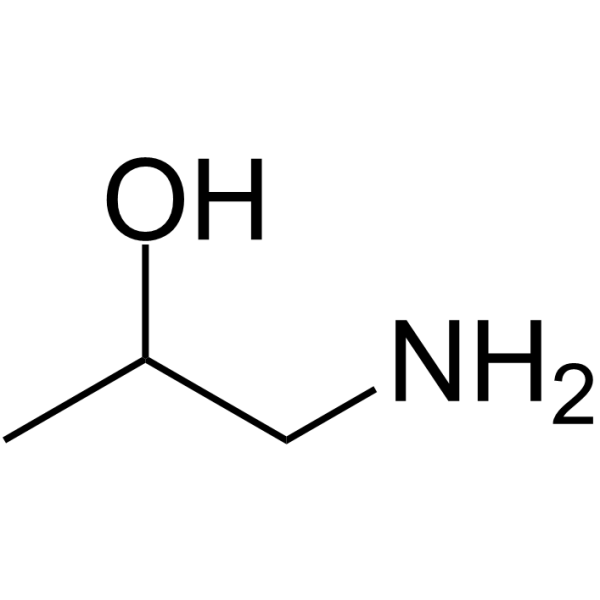
-
GC35029
1-Arachidoyl-sn-glycero-3-phosphocholine
La 1-arachidoyl-sn-glycéro-3-phosphocholine est un lysophospholipide (LyP).
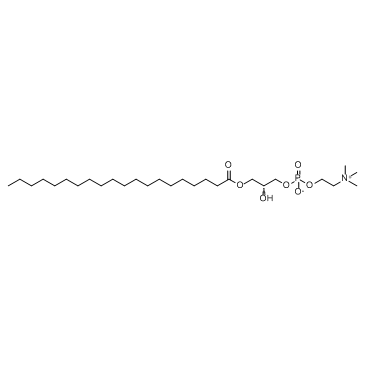
-
GC60445
1-Dodecanol
Le 1-dodécanol est un métabolite endogène.
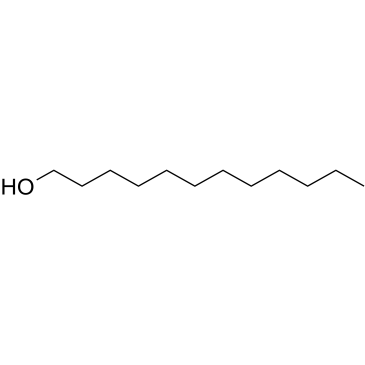
-
GC17829
1-Hexadecanol
Le 1-hexadécanol est un alcool gras, un substrat lipophile.
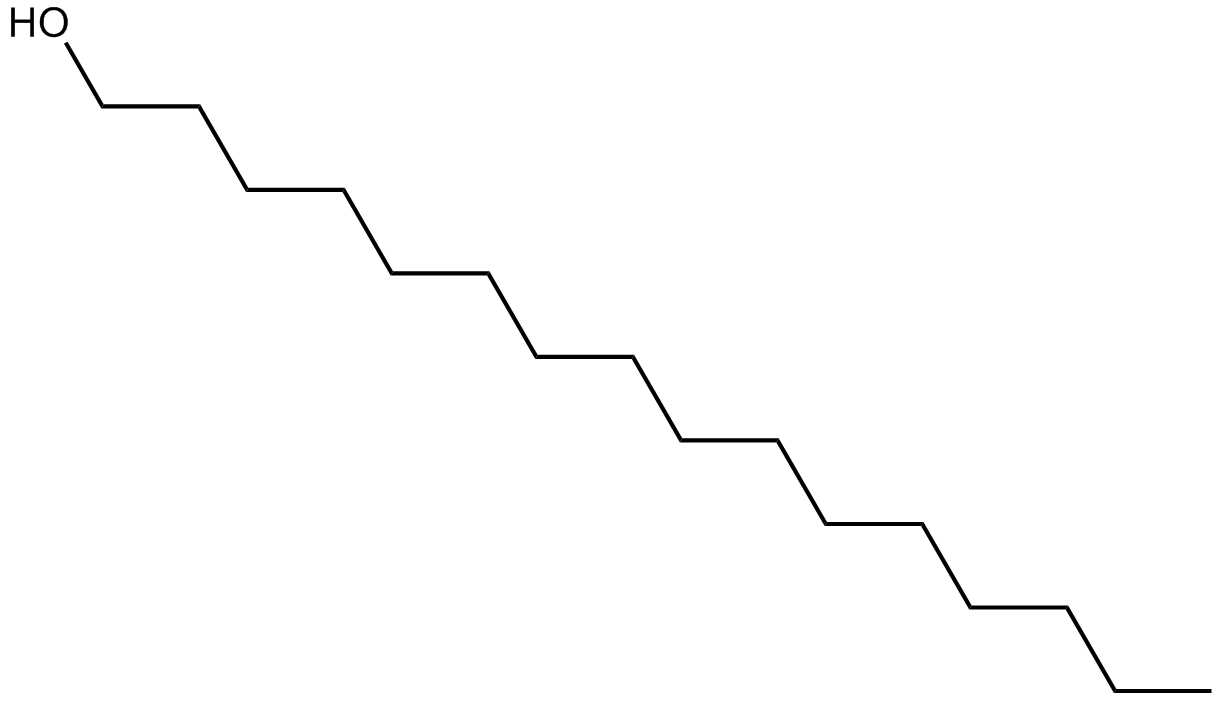
-
GC68495
1-Hexadecanol-d4
1-Hexadecanol-d4 est le déutérium substitué de 1-hexadécanol. Le 1-hexadécanol est un alcool gras, un substrat lipophile.
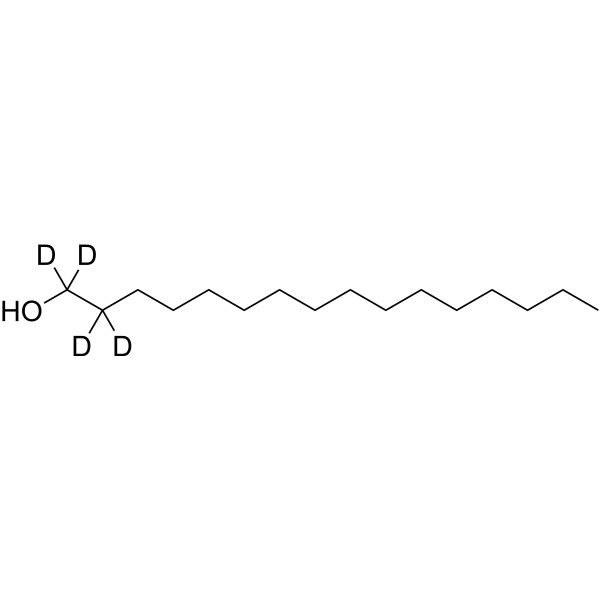
-
GC68496
1-Hexadecanol-d5
1-Hexadecanol-d5 est le dérivé deutérié de 1-hexadécaneol. Le 1-hexadécaneol est un alcool gras, un substrat lipophile.
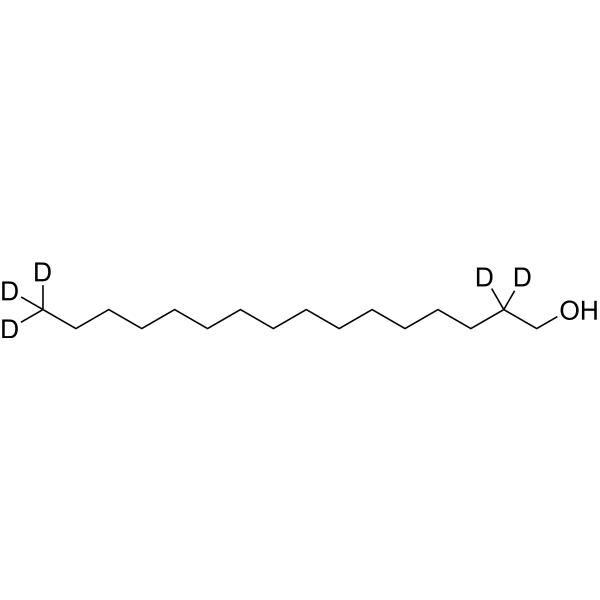
-
GC38271
1-Hydroxy-2-naphthoic acid
L'acide 1-hydroxy-2-naphtoÏque est un métabolite endogène.
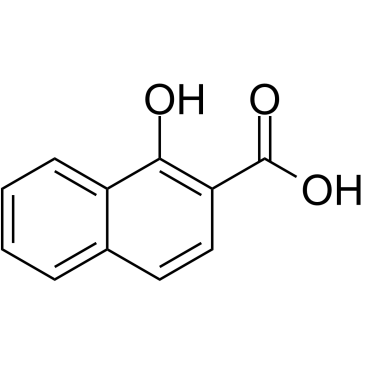
-
GC38670
1-Hydroxyoctadecane
Le 1-hydroxyoctadécane est un métabolite endogène.
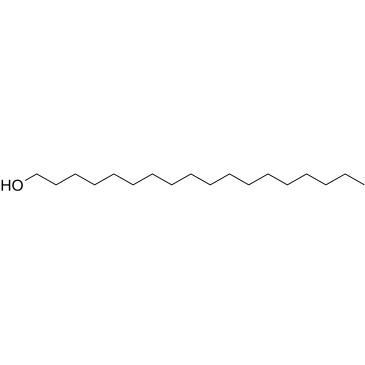
-
GC60448
1-Hydroxypyrene
Le 1-hydroxypyrène, biomarqueur de l'exposition aux hydrocarbures aromatiques polycycliques (HAP), est analysé dans des échantillons d'urine.
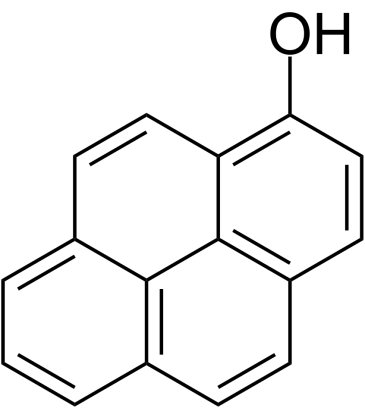
-
GC32294
1-Kestose
1-Kestose, le plus petit composant fructo-oligosaccharide, qui stimule efficacement Faecalibacterium prausnitzii ainsi que les bifidobactéries.
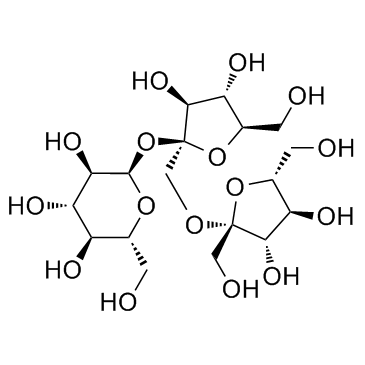
-
GC46482
1-Linoleoyl-2-Hydroxy-sn-glycero-3-PC
1-Linoléoyl-2-Hydroxy-sn-glycéro-3-PC (1-Linoléoyl-2-Hydroxy-sn-glycéro-3-PC), un lysophospholipide, est un biomarqueur potentiel identifié À partir du syndrome des ovaires polykystiques de résistance À l'insuline (IR) (SOPK).

-
GC64598
1-Methyl-L-histidine-d3
La 1-méthyl-L-histidine-d3 est la 1-méthyl-L-histidine marquée au deutérium.

-
GC33646
1-Methyladenine
La 1-méthyladénine est un produit de dommages d'alkylation dans l'ADN qui peut être réparé par inversion des dommages par déméthylation oxydative.
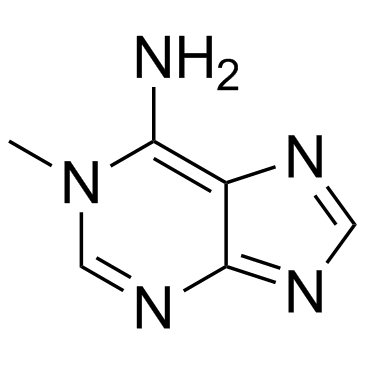
-
GC33463
1-Methyladenosine
La 1-méthyladénosine est une modification de l'ARN provenant essentiellement de deux types de réactions différentes, l'une catalysée par des enzymes et l'autre résultant de la réaction de l'ARN avec certains agents alkylants.
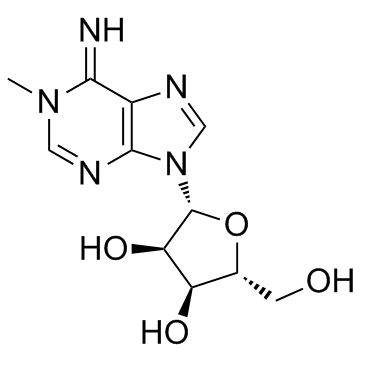
-
GC61442
1-Methylguanidine hydrochloride
Le chlorhydrate de 1-méthylguanidine est un métabolite endogène.
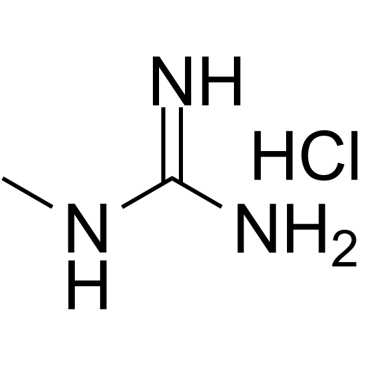
-
GC35067
1-Methylguanosine
La 1-méthylguanosine est un nucléoside méthylé provenant de la dégradation de l'ARN. La 1-méthylguanosine est un marqueur tumoral.

-
GC41999
1-Methylhistamine (hydrochloride)
La 1-méthylhistamine (chlorhydrate) est un métabolite de l'histamine.

-
GC65038
1-Methylinosine
La 1-méthylinosine est un nucléotide modifié trouvé en position 37 dans l'ARNt en 3' de l'anticodon de l'ARNt eucaryote.

-
GC42000
1-Methylnicotinamide (chloride)
Le 1-méthylnicotinamide (chlorure) (chlorure de 1-méthylnicotinamide) est un métabolite endogène.

-
GC31610
1-Methyluric acid
L'acide 1-méthylurique agit sur la muqueuse de la vessie et augmente les taux sanguins de glucose, d'insuline, de triglycérides et de cholestérol.

-
GC60449
1-Methylxanthine
La 1-méthylxanthine, un dérivé de la caféine, est un métabolite urinaire humain essentiel de la caféine et de la théophylline (1,3-diméthylxanthine, TP). La 1-méthylxanthine améliore la radiosensibilité des cellules tumorales.
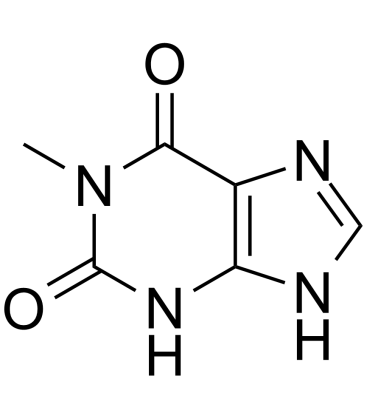
-
GC35068
1-Monomyristin
La 1-monomyristine, extraite de Serenoa repens, inhibe l'hydrolyse du 2-oléoylglycérol (IC50=32 μM) et l'activité de l'amide hydrolase d'acide gras (FAAH) (IC50=18 μM).

-
GC38556
1-Myristoyl-2-stearoyl-sn-glycero-3-phosphocholine
La 1-myristoyl-2-stéaroyl-sn-glycéro-3-phosphocholine est un métabolite endogène.
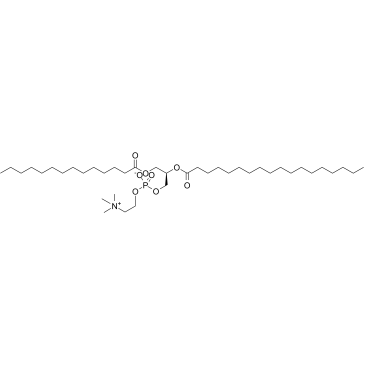
-
GC30641
1-Naphthol (Fourrine ERN)
Le 1-naphtol est une sonde moléculaire fluorescente À transfert de protons À l'état excité (ESPT).
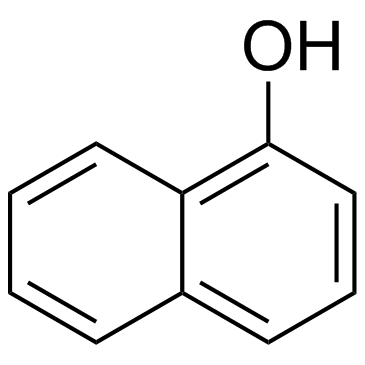
-
GA20382
1-O-Octadecyl-rac-glycerol
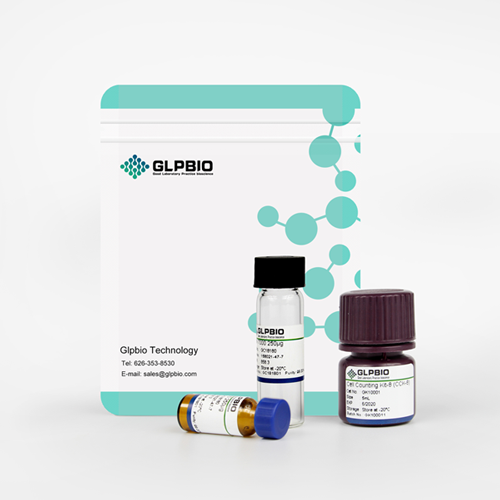
-
GC39470
1-Octanol
Le 1-octanol (Octanol), un alcool gras saturé, est un inhibiteur des canaux calciques de type T (canaux T) avec une IC50 de 4 μM pour les courants T natifs.
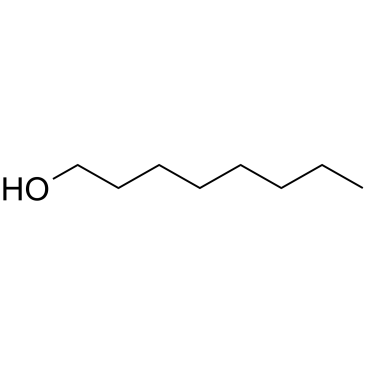
-
GC40183
1-Oleoyl Glycerol
Le 1-oléoyl glycérol est un métabolite endogène.

-
GC46488
1-Palmitoyl-2-Docosahexaenoyl-sn-glycero-3-PC
A phospholipid

-
GC68501
1-Palmitoyl-2-oleoyl-sn-glycerol
1-Palmitoyl-2-oleoyl-sn-glycerol est un métabolite endogène et le principal diacylglycérol dans le facteur inducteur d'hypoxie (HIF)-1 des algues.
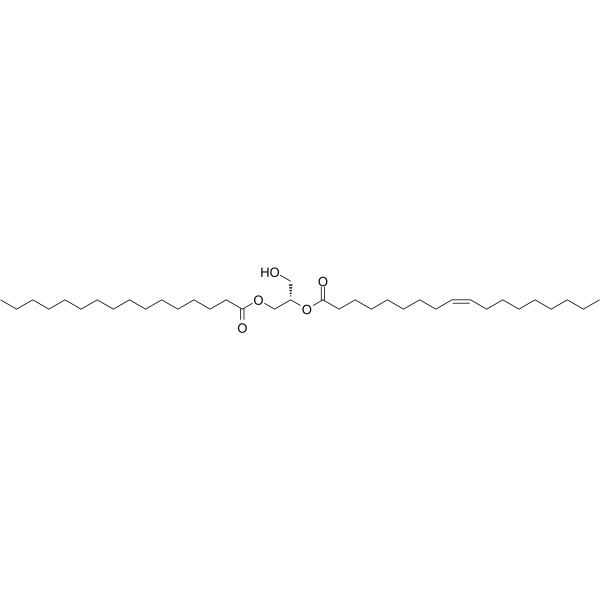
-
GC49366
1-Salicylate Glucuronide
A metabolite of salicylic acid and aspirin

-
GC42039
1-Stearoyl-2-15(S)-HETE-sn-glycero-3-PC
1-Stearoyl-2-15(S)-HETE-sn-glycero-3-PC is a phospholipid that contains stearic acid at the sn-1 position and 15(S)-HETE at the sn-2 position.

-
GC42040
1-Stearoyl-2-15(S)-HETE-sn-glycero-3-PE
1-Stearoyl-2-15(S)-HETE-sn-glycero-3-PE is a phospholipid that contains stearic acid at the sn-1 position and 15(S)-HETE at the sn-2 position.

-
GC49730
1-Stearoyl-2-15(S)-HETE-sn-glycero-3-PE-d11
An internal standard for the quantification of 1-stearoyl-2-15(S)-HETE-sn-glycero-3-PE

-
GC42041
1-Stearoyl-2-15(S)-HpETE-sn-glycero-3-PC
1-Stearoyl-2-15(S)-HpETE-sn-glycero-3-PC is a phospholipid that contains stearic acid at the sn-1 position and 15(S)-HpETE at the sn-2 position.

-
GC42042
1-Stearoyl-2-15(S)-HpETE-sn-glycero-3-PE
1-Stearoyl-2-15(S)-HpETE-sn-glycero-3-PE is a phospholipid that contains stearic acid at the sn-1 position and 15(S)-HpETE at the sn-2 position.

-
GC11139
1-Stearoyl-2-Arachidonoyl-sn-glycero-3-PC
A phospholipid
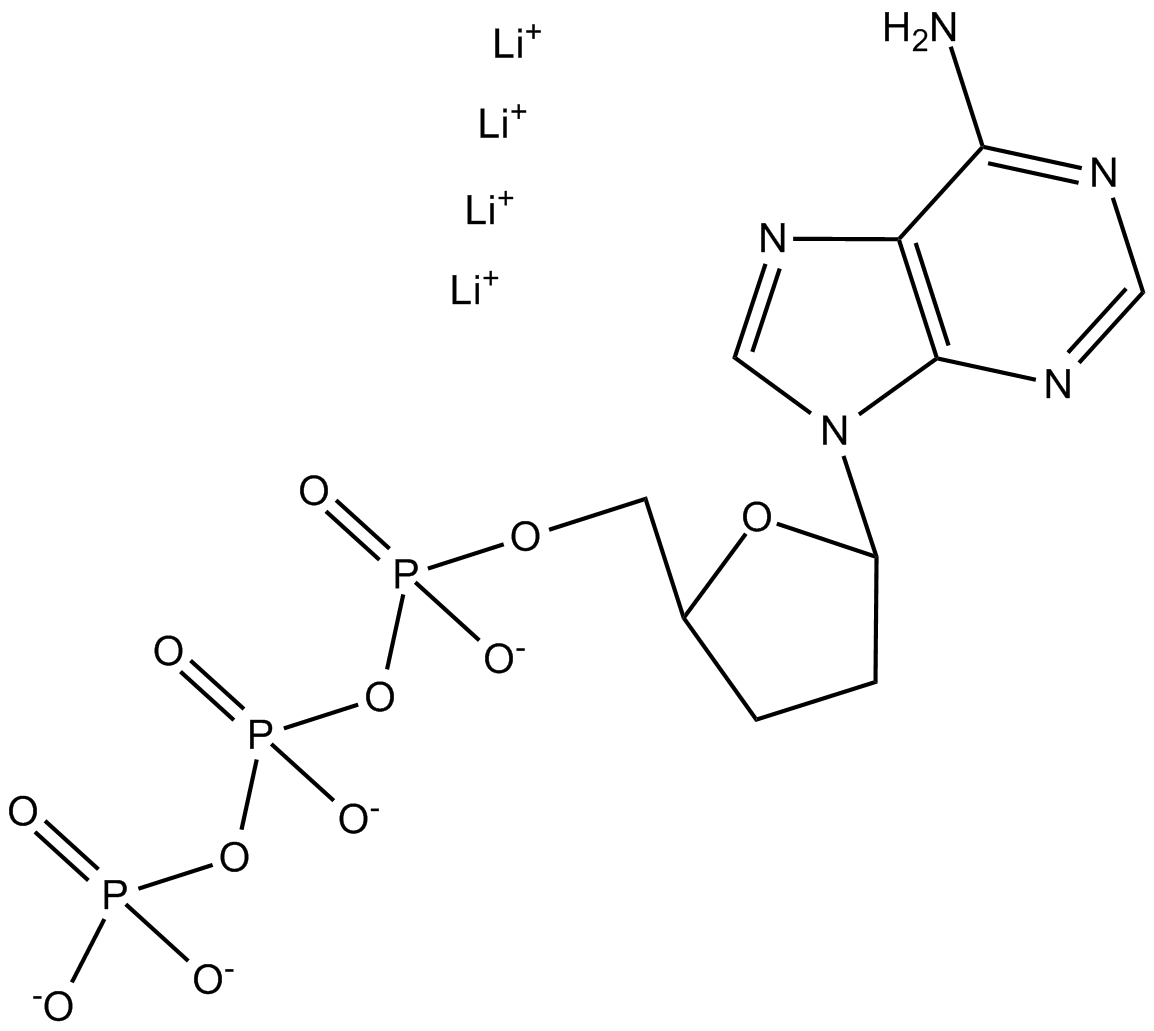
-
GC68502
1-Stearoyl-2-linoleoyl-sn-glycero-3-phosphocholine
Le stéaroyl-2-linoléoyl-sn-glycéro-3-phosphocholine peut être choisi comme composé volatil modèle pour étudier les différentes espèces de phosphatidylcholine oxydées. Cette méthode est appliquée aux échantillons alimentaires réels, tels que la lécithine de soja.
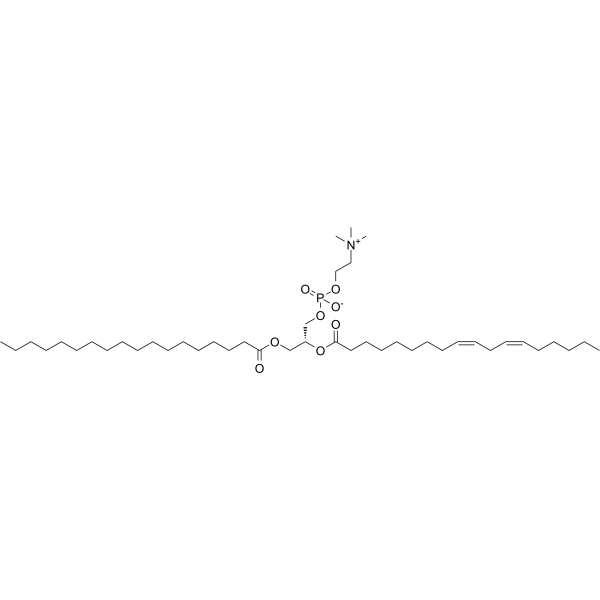
-
GC40971
10(S),17(S)-DiHDHA
La 10(S),17(S)-DiHDHA (également connue sous le nom de neuroprotectine D1 lorsqu'elle est produite dans les tissus neuronaux) est un acide gras dihydroxy dérivé du DHA qui présente de puissantes activités protectrices et anti-inflammatoires.

-
GC49820
10,11-dihydro-10,11-dihydroxy Carbamazepine
A metabolite of carbamazepine and oxcarbazepine

-
GC66057
10,11-Dihydrocarbamazepine
La 10,11-dihydrocarbamazépine est le métabolite actif de l'oxcarbazépine. La 10,11-dihydrocarbamazépine est également un intermédiaire. L'oxcarbazépine est rapidement et presque complètement convertie en 10,11-dihydrocarbamazépine avec une efficacité anticonvulsivante probable.
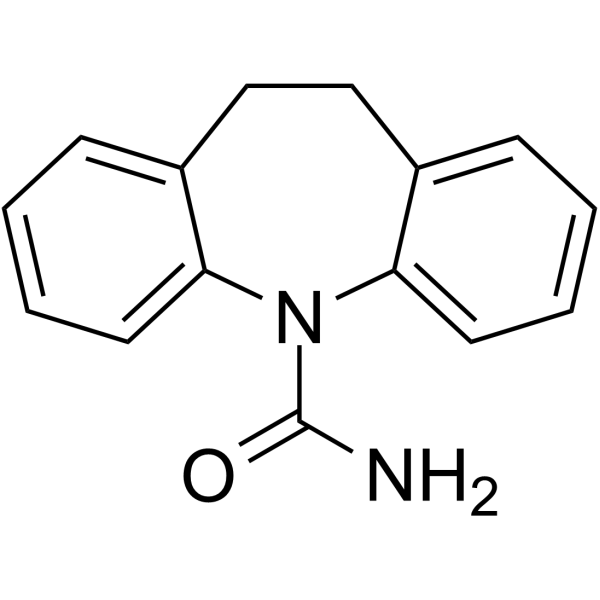
-
GC38881
10,12-Tricosadiynoic acid
L'acide 10,12-tricosadiynoÏque est un inhibiteur de l'acyl-CoA oxydase-1 (ACOX1) hautement spécifique, sélectif, de haute affinité et actif par voie orale.
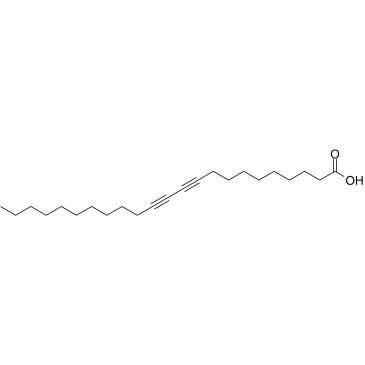
-
GC49872
10-Formyltetrahydrofolate (sodium salt) (technical grade)
Le 10-formyltétrahydrofolate (sel de sodium) (qualité technique) est une forme d'acide tétrahydrofolique qui agit comme donneur de groupes formyle dans l'anabolisme.



